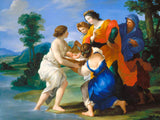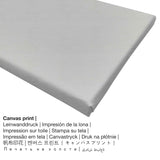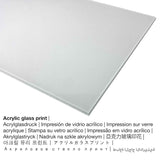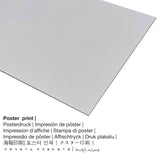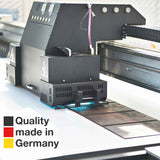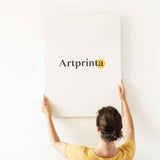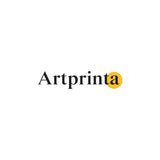Giovanni F. Romanelli, 1657 - Nchọta nke Moses - ọmarịcha nka
Ụtụ gụnyere. Mbupu gbakọrọ na ndenye ọpụpụ.
Supplemental information by Indianapolis Museum of Art (© Copyright - Indianapolis Museum of Art - Analọ ihe nkiri nka nke Indianapolis)
Romanelli was the most talented of Pietro da Cortona's students. Like his master, he enjoyed the patronage of Cardinal Francesco Barberini and his uncle, Pope Urban VIII. The exile of the Barberini to France in 1646 thus came as a terrible blow to Romanelli, who soon followed his patrons to Paris. Romanelli, who brought with him a classicized version of Cortona's Roman Baroque style, was enormously influential in France. This canvas was painted during Romanelli's second stay in Paris (1655-1656), when he decorated the apartments of the Queen Mother, Anne of Austria, at the Louvre.
"The Finding of Moses"si Giovanni F. Romanelli dị ka ihe osise ọhụrụ gị
The painting was painted by the baroque master Giovanni F. Romanelli n’afọ 1657. Ihe kariri 360 Original dị afọ nwere nha ndị a: 34 x 45 n’ime. Mmanụ na kwaaji was applied by the European artist as the medium of the masterpiece. Today, this artpiece is in the the Indianapolis Museum of Art's art collection. With courtesy of Analọ ihe nkiri nka nke Indianapolis (public domain).Besides, the artwork has the creditline: . Furthermore, alignment of the digital reproduction is landscape with an image ratio of 4: 3, nke pụtara na ogologo bụ 33% ogologo karịa obosara. The painter Giovanni F. Romanelli was a European artist, whose artistic style can be attributed mainly to Baroque.
Kedu ihe kacha amasị gị?
In the dropdown lists next to the product you can choose the material and sizeaccording to your individual preferences. Select your favorite size and material among the alternatives:
- Aluminom ihe eji eme ihe: An Aluminium Dibond print is a print material with a true depth effect - for a modern impression and non-reflective surface structure. The Aluminium Dibond Print is your perfect introduction to fine art prints produced on aluminum. The bright and white parts of the original artwork shimmer with a silk gloss, however without any glare.
- Kwaaji: A printed canvas mounted on a wood stretcher frame. A printed canvas creates a cosy and positive ambience. A canvas print has the advantage of being low in weight. That means, it is easy and straightforward to hang up your Canvas print without any wall-mounts. Because of thata canvas print is suitable for any type of wall.
- Mbipụta iko acrylic (nke nwere ezigbo mkpuchi iko): A glossy acrylic glass print, often denoted as a an art print on plexiglass, will change your favorite original into home décor and is a great alternative to aluminium and canvas art prints. Your own copy of the work of art is being printed with the help of modern UV direct printing machines.
- Akwụkwọ mmado na ihe kwaaji: The poster is a UV printed flat canvas with a granular surface texture. It is particularly qualified for putting your art print in a custom frame. Please note, that depending on the absolute size of the poster we add a white margin of something between 2-6cm around the print, which facilitates the framing with your custom frame.
Ozi omenkà Contextal
| aha: | Giovanni F. Romanelli |
| Gender: | nwoke |
| Obodo onye nka: | Italian |
| Ọrụ onye na-ese ihe: | onye na-ese ihe |
| Obodo onye nka: | Italy |
| Nhazi nke onye nka: | nna ukwu ochie |
| Ụdị nka: | Baroque |
Nkọwa nka ahaziri
| Aha eserese: | "The Finding of Moses" |
| Nhazi nka: | sere |
| Okwu mkpokọta: | nka ochie |
| Time: | 17th narị afọ |
| Afọ nka: | 1657 |
| Ogologo afọ nka nka: | karịa afọ 360 |
| Usoro izizi: | mmanụ na kwaaji |
| Akụkụ nke ihe osise izizi: | 34 x 45 n’ime |
| Ụlọ ihe ngosi nka / mkpokọta: | Analọ ihe nkiri nka nke Indianapolis |
| Ebe ngosi nka: | Indianapolis, Indiana, Njikota Obodo Amerika |
| website: | Analọ ihe nkiri nka nke Indianapolis |
| Licensedị ikike: | ngalaba ọha |
| Site n'aka: | Analọ ihe nkiri nka nke Indianapolis |
Banyere ngwaahịa a
| Nkewa ngwaahịa: | ọrụ mgbidi |
| Usoro mmeputakwa: | dijitalụ mmeputakwa |
| Usoro mmepụta: | Mbipụta UV ozugbo (mbipụta dijitalụ) |
| Nlụpụta: | Germany |
| Stockdị ngwaahịa: | a na-achọ |
| A na-atụ aro iji ngwaahịa eme ihe: | ihe ndozi ụlọ, ụlọ mmepụta nka nka |
| Nhazi nka nka: | usoro odida obodo |
| Oke akụkụ: | ogologo ruo obosara 4: 3 |
| Ntụgharị nkọwa akụkụ onyonyo: | ogologo bụ 33% ogologo karịa obosara |
| Ụdị dị iche iche dị: | ígwè obibi akwụkwọ (aluminium dibond), ebipụta canvas, mbipụta akwụkwọ mmado (akwụkwọ kwaaji), mbipụta iko acrylic (nwere ezigbo mkpuchi iko) |
| Ọdịiche dị n'okirikiri akwa akwa akwa (akwa akwa): | 40x30cm - 16x12" |
| Mpempe iko acrylic (nwere ezigbo mkpuchi iko) nha dị iche iche: | 40x30cm - 16x12" |
| Nhọrọ nha nke akwụkwọ mmado (akwụkwọ kwaaji): | 40x30cm - 16x12" |
| Ụdị mbipụta aluminom dibond: | 40x30cm - 16x12" |
| Igwe onyonyo: | na-enweghị etiti |
Ederede iwu dị mkpa: We try everythig possible in order to depict the products as precisely as possible and to display them visually in our shop. Nevertheless, the colors of the print products, as well as the print result can vary somehwat from the presentation on your device's screen. Depending on your screen settings and the quality of the surface, color pigments can unfortunately not be printed as realistically as the digital version shown here. Given that all the art reproductions are printed and processed by hand, there might also be minor variations in the size and exact position of the motif.
© echekwabara ikike nwebiisinka, Artprinta.com

